"Item is a film production of a trip from Naples to Nice taken by Dr. Willinsky and his wife, Sadie. In the form of a travelogue, footage of landmarks, ancient ruins and the local population is interspersed with captions and maps that were added in by Dr. Willinsky to denote locations and offer context. Featured cities include, Pompeii, Salerno, Rome, Cannes, Antibes, and Menton. Footage includes shots of Vesuvius, images taken from a gondala ride in Venice, Venetian street performers, market scenes, cathedrals, children dressed in costumes for a carnival, and various local craftsmen at work. Sadie is occassionally spotted in the footage interacting with locals and with travel companions who are probably relatives or family friends." Ontario Jewish Archives.
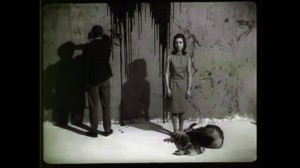
“İlk film çalışmalarını Paris’te gerçekleştiren Heper, Galatasaray Lisesi’nden mezun olduktan sonra önce hukuk okumak için Cenevre’ye gider lakin mutlu olamaz ve okulu bırakarak Fransa’ya geçip, Paris Yüksek Sinema Enstitüsü’de (Institut des Hautes Etudes Cinématographiques – IDHEC) sinema eğitimi almaya başlar. Bu okuldan ‘En İyi Yönetmen’ ünvanı ile mezun olan yönetmen, bu dönem (1963 yılında) gerçekleştirdiği iki kısa filminden ilki olan ‘Bir Kadın’ ile IDHEC, ikinci kısa filmi Şafak ile de hem IDHEC hem de Avusturya Kültür Bakanlığı En İyi Film ödülünü almıştır.” Burak Çevik, Sinematek.tv: http://sinematek.tv/alp-zeki-heper-ve-iki-kisa-filmi-bir-kadin-safak/ (15 November 2019).
“Graduated from Galatasaray Highschool, Heper first went to Geneva to study law. Because he was unhappy in Geneva, he left the law school and went to Paris to study filmmaking at Institut des Hautes Etudes Cinématographiques (IDHEC). He graduated from IDHEC with the award, “the best director.” The two student short films, Bir Kadın and Şafak, made by Heper when he was at IDHEC, received the best film awards from both IDHEC and the Austrian Ministry of Culture. Burak Çevik, Sinematek.tv: http://sinematek.tv/alp-zeki-heper-ve-iki-kisa-filmi-bir-kadin-safak/ (15 November 2019).
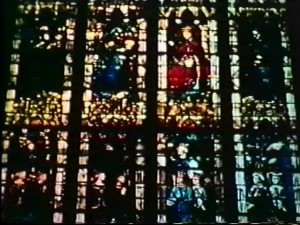
"Studies in Blue and Chartres Cathedral, a cerulean cinema achievement, one 400 foot reel in full Kodacolor by John V. Hansen, ACL, shows what an artist's and a colorist's eye can select and record. While this film is in some sense a travel record, Mr. Hansen definitely made it a point to choose those scenes and vistas that revealed the open sky, whether seen in patches through the interlaced branches of trees or as a dim, distance haze, shimmering up from the tops of far off mountains. Here are deep blue skies overhead, merging into white mist at the horizon, apple green, azure, so many hues that it is a revelation to see that a mechanical process can so beautifully record nature. Mr. Hansen presents to the audience's eyes such a varying kaleidoscope of blending colors in his continuity that it is difficult to do the entire effect justice by mere description. But among his outstanding technical achievements are the recording of sunlit glades in a dense forest, especially effective cloud and sunset shots, distant and close shots and side lighting and backlighting in profusion. A further, outstanding triumph in color technique was shown in Mr. Hansen's recording of the vivid, glowing hues of the stained glass windows, taken from the interior of the cathedral at Chartres. Here, he succeeded in capturing that peculiar, deep dyed transparency found only in the colors of old stained glass. It is questionable if any other method of reproducing color can give such a real and beautiful rendition of stained windows as the motion picture. Certainly no color printing process can compete. The film was rounded out by some charming long shots of the carefully cultivated, rolling hills of Denmark." Movie Makers, Dec. 1932, 538, 560.
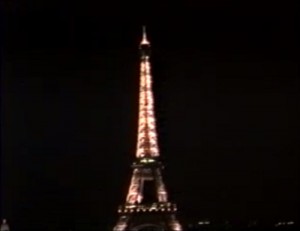
"In September 1992, Robbins Barstow and his wife Meg, of Wethersfield, Connecticut, USA, celebrated their 50th Wedding Anniversary by spending ten days visiting their son David and his family in Paris, France. Their two grandchildren, Geoffrey and Suzanna, showed them the sights of the city of lights, including the Eiffel Tower, Arc de Triomphe, Notre Dame Cathedral, Grand Opera House, and the Louvre." Archive.org
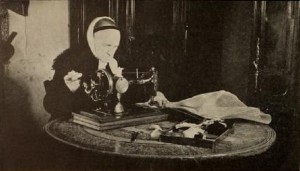
"Luc Fauvel is a Norman, and he turned to his own pays to contrive as sensitive and trenchant a study of French provincial life, in miniature, done by the medium of film, as did giants like Flaubert and de Maupassant through the medium of words. His Vieille France has irony, pathos, humor and plain reporting. It is the tale of an old bonnet maker of Normandy, who goes through her daily tasks, in which she has grown old, but who, at the end of the labor, reviews the past, by means of her photograph album, and meditates on her son, who died on the field of honor in the World War, and on her daughter who has become a great dancer and is far removed from the little Norman village of her origin. Mr. Fauvel accomplishes most by suggestion, by indirect statement and by a kind of insidious comment on life, never more than fleetingly presented. This young Frenchman, now studying at Cambridge, in England, will give us better and more technically well knit pictures as times goes on." Movie Makers, Dec. 1937, 630.
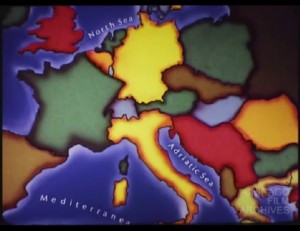
"In 2 parts, the film depicts a cycling journey around central Europe through Belgium, France, Switzerland, Italy, Yugoslavia, West Germany, and the Netherlands. Tourist scenes includes shots of Venetian canals, the leaning tower of Pisa, and Dutch windmills.In 2 parts, the film depicts a cycling journey around central Europe through Belgium, France, Switzerland, Italy, Yugoslavia, West Germany, and the Netherlands. Tourist scenes includes shots of Venetian canals, the leaning tower of Pisa, and Dutch windmills." Chicago Film Archives.
Total Pages: 2